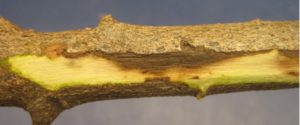Submitting Samples From a Tree or Shrub in the Landscape
go.ncsu.edu/readext?673328
en Español / em Português
El inglés es el idioma de control de esta página. En la medida en que haya algún conflicto entre la traducción al inglés y la traducción, el inglés prevalece.
Al hacer clic en el enlace de traducción se activa un servicio de traducción gratuito para convertir la página al español. Al igual que con cualquier traducción por Internet, la conversión no es sensible al contexto y puede que no traduzca el texto en su significado original. NC State Extension no garantiza la exactitud del texto traducido. Por favor, tenga en cuenta que algunas aplicaciones y/o servicios pueden no funcionar como se espera cuando se traducen.
Português
Inglês é o idioma de controle desta página. Na medida que haja algum conflito entre o texto original em Inglês e a tradução, o Inglês prevalece.
Ao clicar no link de tradução, um serviço gratuito de tradução será ativado para converter a página para o Português. Como em qualquer tradução pela internet, a conversão não é sensivel ao contexto e pode não ocorrer a tradução para o significado orginal. O serviço de Extensão da Carolina do Norte (NC State Extension) não garante a exatidão do texto traduzido. Por favor, observe que algumas funções ou serviços podem não funcionar como esperado após a tradução.
English
English is the controlling language of this page. To the extent there is any conflict between the English text and the translation, English controls.
Clicking on the translation link activates a free translation service to convert the page to Spanish. As with any Internet translation, the conversion is not context-sensitive and may not translate the text to its original meaning. NC State Extension does not guarantee the accuracy of the translated text. Please note that some applications and/or services may not function as expected when translated.
Collapse ▲A good sample is essential for an accurate diagnosis. Please follow these instructions carefully. The instructions on this page apply to sampling trees, shrubs, and vines from both commercial and home landscapes.
Related pages…
- Instructions for submitting arthropods (insects, mites, spiders, etc.)
- Sample submission forms: digital (preferred) | printable PDF for mailing
- Shipping instructions
- Instructions for samples sent from outside of North Carolina
To sample for disease diagnosis
- Select living plants with moderate symptoms.
- Collect samples when the foliage is dry and the ground is not saturated.
- Dig a generous double handful of fine roots and one quart of soil from selected plants. Make sure you are collecting roots from the plant of interest, not from neighboring trees or shrubs.
- Place roots and soil together in a plastic bag and close securely.
- Place several branches that are showing different stages of decline in a separate, closed plastic bag. Do not add water or wet paper towels.
- Note: it is a common mistake to submit foliage/branches that are either entirely healthy or entirely dead. Usually these are not diagnostically informative. Instead, look for places where the dead bark/cambium/wood stops and the live tissue begins. If these are present, cut branches so as to include several inches on either side of the transition.
- For smaller plants, submit an entire plant, if possible. Cover the roots and soil with a plastic bag to prevent soil from getting on the foliage. Place the entire plant in another plastic bag and secure.
- If a tree or shrub is in such poor condition that it is to be removed, but yet it’s too large to submit whole, the lower 8-12″ of the main stem(s) and the top of the root system are very important diagnostically and should be included.
- Ripe fruits should be packed in absorbent material. They should not be bagged unless coming from outside of North Carolina, in which case double-bagging is required.
- Keep samples out of the sun, preferably refrigerated, until they can be shipped or taken to the clinic.
In addition to the physical sample, a few photographs showing the symptoms of concern and their distribution in the landscape can be helpful to the diagnosticians. In the case of trees, be sure to include a picture of the whole crown and one or two from the base of the trunk. These can be uploaded to the database along with the sample information.




